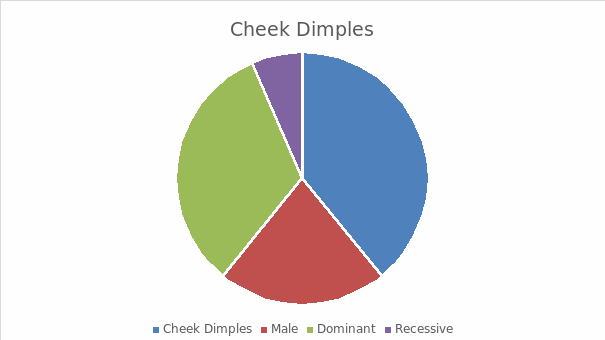Human skin may have little indentations called dimples. They can appear on many body areas, including as the lower back, chin, and cheeks. Cheek dimples are frequently referred to as a hereditary dominant characteristic (Opoku-Agyeman et al., 2020). On the real genetics of cheek dimples, however, very little research has been done. Whether or not dimples are genuinely hereditary is unknown. Children born to someone with dimples frequently get them as well. This shows that it is a dominant trait that is inherited. However, not every couple with dimples has a child who also has them. Later generations of the family may get dimples that look identical. One family, for instance, was seen to share dimples on both cheeks with siblings, father, grandpa, and great-grandfather (Opoku-Agyeman et al., 2020). In certain families, children may have dimples, although they are not sustained over more than one generation. Additionally, while some people may always have dimples, others may actually see a shift in their dimples throughout time. Having dimples as a youngster does not guarantee having them as an adult. Additionally, a youngster who was born without dimples could get them later in life.
Cheek dimples are thought to be chromosome 16-related. According to various studies, cheek dimples are formed by the insertion of fibers on the inferior bundle of the zygomaticus major muscle or by the muscle’s bifurcation (Opoku-Agyeman et al., 2020). Thus, cheek dimples are specifically mapped to chromosome 16. The survey conducted on cheek dimples included 30 individuals, including friends and acquaintances. The data collected was evaluated, and the findings showed that the phenomenon of cheek dimples is mostly a dominant trait.

Reference
Opoku-Agyeman, J. L., Simone, J. E., Matera, D. V., & Behnam, A. B. (2020). Cheek dimpleplasty: a review of the literature.The American Journal of Cosmetic Surgery, 37(2), 91-96.